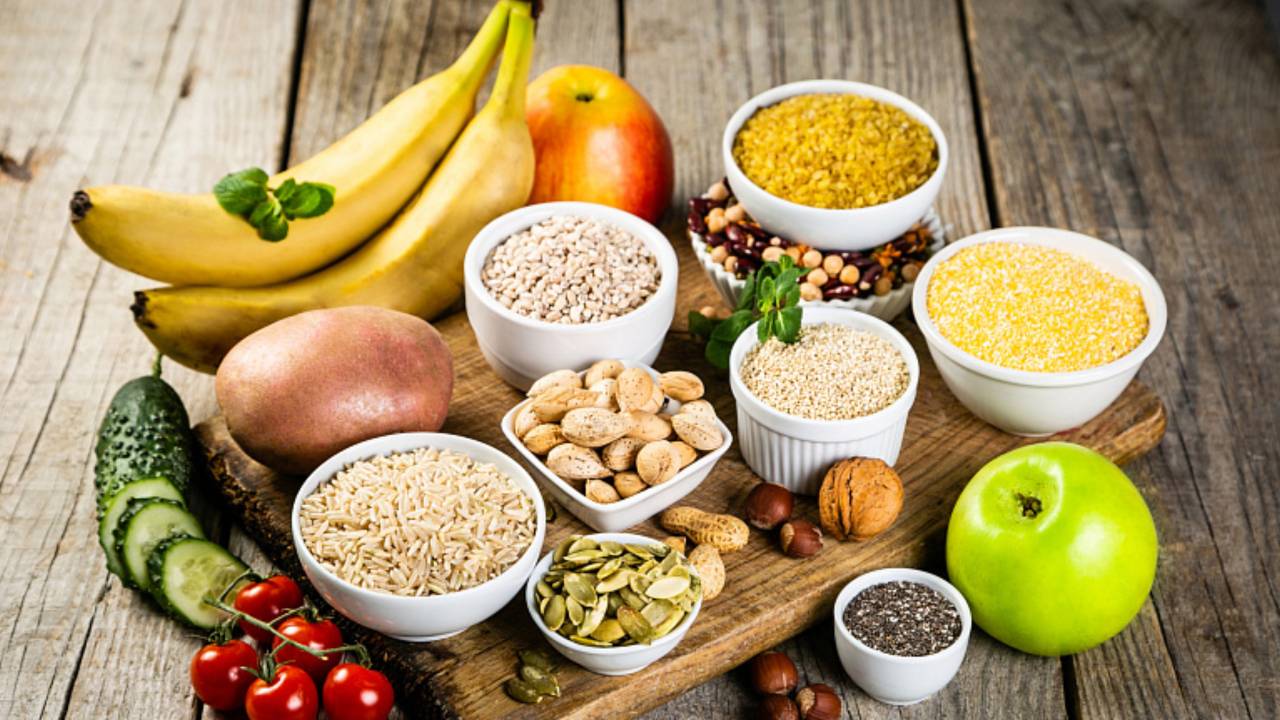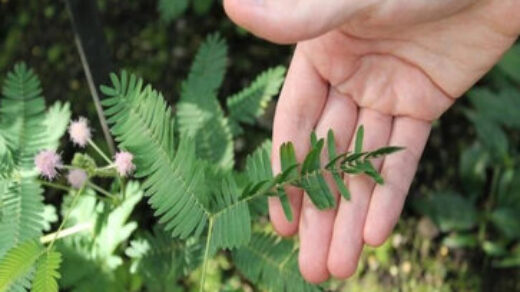Ayurvedic Cleanse: Top 10 Powerful Herbs to Flush Out Toxins
In today’s hectic world, environmental pollutants, processed foods, and stress lead to toxin buildup in our bodies. Ayurveda, the ancient Indian healing system, provides a holistic detox approach, aiming to restore balance to the body, mind, and spirit. By focusing on natural remedies, Ayurvedic practices help cleanse the body of harmful toxins while promoting vitality.

An Ayurvedic cleanse, or Panchakarma, is designed to remove toxins (known as ama) and rejuvenate the body. Central to this process are Ayurvedic herbs, which play a vital role in supporting detoxification. In this article, we will explore 10 powerful Ayurvedic herbs that help detoxify the body, along with tips on how to incorporate them into your daily routine.
What is an Ayurvedic Cleanse?
An Ayurvedic cleanse is a natural and holistic approach to detoxification that aims to remove toxins from the body, improve digestion, and restore balance to the doshas (Vata, Pitta, and Kapha).
Unlike modern detox programs that often focus on fasting or extreme diets, Ayurveda emphasizes gentle and sustainable methods to cleanse the body. This includes the use of herbs, dietary changes, and lifestyle practices such as yoga, meditation, and oil massage.
Why Detoxify?
Toxins, or ama, accumulate in the body due to poor digestion, unhealthy eating habits, stress, and environmental factors. Over time, ama can clog the channels of the body (known as srotas), leading to imbalances, fatigue, and disease. An Ayurvedic cleanse helps to:
- Improve digestion and metabolism.
- Boost energy levels.
- Enhance mental clarity.
- Support the immune system.
- Promote overall well-being.
Top 10 Ayurvedic Herbs for Detoxification
Ayurveda offers a wealth of herbs that support the body’s natural detoxification processes. These herbs work by cleansing the blood, liver, and digestive system, while also balancing the doshas. Below are 10 Ayurvedic herbs that are particularly effective for detoxification.
1. Triphala: The Ultimate Detoxifier
Triphala, a revered Ayurvedic formulation, combines three fruits—Amalaki (Indian gooseberry), Bibhitaki, and Haritaki. This potent blend is celebrated for its gentle yet effective detoxifying properties, promoting digestion, cleansing, and overall balance in the body.
Benefits of Triphala:
- Supports Digestion: Triphala stimulates the digestive fire (agni) and helps eliminate toxins from the gastrointestinal tract.
- Colon Cleansing: It acts as a mild laxative, promoting regular bowel movements and cleansing the colon.
- Balances Doshas: Triphala is tridoshic, meaning it balances all three doshas (Vata, Pitta, and Kapha).
How to Use:
- Take 1-2 teaspoons of Triphala powder with warm water before bed.
- Alternatively, you can consume Triphala capsules as directed by an Ayurvedic practitioner.
2. Neem: The Blood Purifier
Neem, often called the “village pharmacy,” is a powerful herb renowned for its blood-purifying and detoxifying properties. It supports immune health, improves skin conditions, and helps cleanse the body by removing toxins, promoting overall wellness.
Benefits of Neem:
- Cleanses the Blood: Neem removes toxins from the bloodstream, making it beneficial for skin conditions like acne and eczema.
- Supports Liver Health: It aids in liver detoxification and improves overall liver function.
- Antibacterial and Antifungal: Neem helps fight infections and supports the immune system.
How to Use:
- Drink neem tea or take neem capsules daily.
- Apply neem oil topically for skin detoxification.
3. Turmeric (Haridra): The Golden Healer
Turmeric, a staple in Ayurvedic medicine, is highly valued for its anti-inflammatory, antioxidant, and detoxifying properties. It supports liver health, boosts immunity, reduces inflammation, and helps eliminate toxins, promoting overall wellness and balance in the body.
Benefits of Turmeric:
- Liver Detoxification: Turmeric supports liver function and helps eliminate toxins from the body.
- Anti-Inflammatory: It reduces inflammation in the digestive tract and other tissues.
- Boosts Immunity: Turmeric enhances the body’s natural defense mechanisms.
How to Use:
- Add turmeric powder to warm milk or water.
- Use it in cooking or take turmeric supplements.
4. Guduchi (Giloy): The Rejuvenator
Guduchi, also known as Giloy, is a powerful rejuvenating herb renowned for its detoxifying properties. It enhances immune function, fights inflammation, and helps cleanse the body, promoting overall health and vitality by supporting the body’s natural healing processes.
Benefits of Guduchi:
- Detoxifies the Liver and Kidneys: Guduchi helps remove toxins from these vital organs.
- Boosts Immunity: It strengthens the immune system and protects against infections.
- Rejuvenates the Body: Guduchi promotes overall vitality and energy.
How to Use:
- Drink Guduchi juice or tea.
- Take Guduchi capsules as recommended.
5. Brahmi: The Mind Cleanser
Brahmi is a potent herb that detoxifies both the body and mind. Known for promoting mental clarity, enhancing cognitive function, and fostering emotional balance, it supports overall well-being by calming the nervous system and reducing stress.
Benefits of Brahmi:
- Mental Detox: Brahmi helps clear mental toxins such as stress, anxiety, and brain fog.
- Supports Liver Health: It aids in liver detoxification and improves digestion.
- Enhances Cognitive Function: Brahmi boosts memory and concentration.
How to Use:
- Take Brahmi powder with warm water or milk.
- Use Brahmi oil for head massage.
6. Manjistha: The Blood and Lymph Cleanser
Manjistha is a powerful herb renowned for its ability to purify the blood and lymphatic system. It promotes detoxification, supports skin health, and enhances circulation, making it an essential herb for cleansing and overall vitality in Ayurvedic practices.
Benefits of Manjistha:
- Blood Purification: Manjistha removes toxins and heavy metals from the blood.
- Lymphatic Cleansing: It supports the lymphatic system, which plays a key role in detoxification.
- Skin Health: Manjistha is beneficial for skin conditions caused by toxins.
How to Use:
- Drink Manjistha tea or take it in capsule form.
7. Fennel (Saunf): The Digestive Aid
Fennel is a gentle yet powerful herb that aids digestion and supports detoxification. It promotes healthy gut function, reduces bloating, and helps eliminate toxins from the body, making it an excellent choice for digestive health and overall wellness.
Benefits of Fennel:
- Improves Digestion: Fennel reduces bloating, gas, and indigestion.
- Supports Liver Function: It aids in liver detoxification.
- Balances Doshas: Fennel is tridoshic and helps balance all three doshas.
How to Use:
- Chew fennel seeds after meals.
- Drink fennel tea.
8. Cumin (Jeera): The Digestive Fire Igniter
Cumin is a warming herb that stimulates digestion and supports detoxification. It enhances nutrient absorption, relieves bloating, and helps eliminate toxins, promoting a healthy digestive system and overall bodily balance.
Benefits of Cumin:
- Boosts Digestion: Cumin ignites the digestive fire (agni) and helps eliminate ama.
- Liver Support: It aids in liver detoxification.
- Reduces Inflammation: Cumin has anti-inflammatory properties.
How to Use:
- Add cumin seeds to your meals.
- Drink cumin tea.
9. Dandelion Root: The Liver Tonic
Dandelion root is a natural diuretic and liver tonic known for its detoxifying properties. It helps flush out toxins, supports liver function, and promotes healthy digestion, making it an excellent herb for overall body cleansing and vitality.
Benefits of Dandelion Root:
- Liver Detoxification: Dandelion root stimulates bile production and supports liver health.
- Kidney Cleansing: It acts as a diuretic, helping to flush out toxins through the kidneys.
- Rich in Antioxidants: Dandelion root protects the body from oxidative stress.
How to Use:
- Drink dandelion root tea.
- Take dandelion supplements.
10. Ginger (Adrak): The Digestive Stimulant
Ginger is a warming herb that stimulates digestion and aids detoxification. It enhances metabolic function, reduces inflammation, and helps eliminate toxins, promoting digestive health and overall wellness in the body.
Benefits of Ginger:
- Improves Digestion: Ginger reduces bloating and supports healthy digestion.
- Anti-Inflammatory: It reduces inflammation in the body.
- Boosts Metabolism: Ginger helps burn ama and supports weight loss.
How to Use:
- Drink ginger tea.
- Add fresh ginger to your meals.
How to Incorporate Ayurvedic Herbs into Your Daily Routine
To maximize the benefits of these detoxifying herbs, consider the following tips:
- Start Your Day with Warm Water and Lemon: This simple ritual helps kickstart digestion and detoxification.
- Include Herbs in Your Meals: Add spices like turmeric, cumin, and ginger to your cooking.
- Drink Herbal Teas: Sip on detoxifying teas like fennel, ginger, or dandelion root throughout the day.
- Practice Self-Care: Incorporate Ayurvedic practices like oil massage (abhyanga), yoga, and meditation to support the detox process.
- Consult an Ayurvedic Practitioner: For personalized guidance, consult an Ayurvedic expert to determine the best herbs and practices for your dosha.
FAQs
1. Does Ayurvedic cleanse work?
Yes, Ayurvedic cleanses are effective for detoxifying the body by eliminating toxins (ama), improving digestion, boosting immunity, and restoring balance to the body, mind, and spirit through natural herbs, lifestyle practices, and dietary changes.
2. How can I cleanse at home Ayurveda?
To cleanse at home using Ayurveda, start by following a balanced diet with detoxifying foods like ginger, turmeric, and seasonal fruits. Incorporate herbal teas, drink plenty of water, practice yoga, and use simple detoxifying herbs like Triphala or Neem.
3. How to clean your gut according to Ayurveda?
Ayurveda suggests using herbal remedies like Triphala, ginger, and cumin to support digestion. Eating warm, easy-to-digest meals, practicing mindful eating, and drinking water infused with spices like fennel and coriander can help clean the gut and improve digestion.
4. What is the Ayurveda 21-day detox?
The 21-day Ayurvedic detox focuses on cleansing and rejuvenating the body over three weeks. It typically includes dietary changes, daily herbal supplementation, exercise, meditation, and specific Ayurvedic treatments aimed at removing toxins and restoring balance.
5. What is a 7-day cleanse?
A 7-day Ayurvedic cleanse is a short-term detox program designed to cleanse the body of toxins. It typically involves consuming simple, light foods, drinking herbal teas, and following detoxifying practices to reset the digestive system and boost overall health.
6. What is the age limit for Panchakarma?
Panchakarma, an Ayurvedic detox therapy, can be beneficial for people of all ages, though individuals with certain health conditions or those under age 16 or over 70 may require a modified approach. Consult with an Ayurvedic practitioner for personalized advice.
7. How can I cleanse my whole body?
To cleanse your body, consider following an Ayurvedic detox program that includes herbal supplements, a clean diet, regular exercise, meditation, and Ayurvedic therapies like oil massages and steam baths to remove toxins and restore balance.
8. What is a 12-day Panchakarma?
A 12-day Panchakarma treatment is an Ayurvedic detoxification process designed to deeply cleanse and rejuvenate the body. It includes personalized therapies, such as oil treatments, steam therapy, and herbal detox, tailored to the individual’s dosha and health needs.
9. What should I eat after Ayurvedic cleanse?
After an Ayurvedic cleanse, focus on nourishing, easily digestible foods like soups, cooked vegetables, and whole grains. Avoid heavy, oily, or processed foods. Gradually reintroduce proteins and dairy, and continue with herbal teas to support digestion.
10. How many days to cleanse?
The length of an Ayurvedic cleanse depends on the individual’s health goals. A cleanse can last anywhere from 3 to 21 days, with longer cleanses (like 21-day programs) often providing deeper detoxification and rejuvenation.
11. Can I sleep during Panchakarma?
Yes, sleep is essential during Panchakarma. Rest helps the body recover and absorb the benefits of the treatments. Adequate sleep supports the detoxification process and enhances healing during the therapy.
12. How to detox your liver in Ayurveda?
To detox the liver in Ayurveda, focus on herbs like turmeric, dandelion root, and Guduchi. Drinking warm water with lemon, avoiding heavy foods, and following a detoxifying diet with light, fresh vegetables can support liver health.
13. How can I clean my liver in 7 days?
To cleanse the liver in 7 days, focus on detoxifying foods like beets, leafy greens, and citrus fruits. Incorporate liver-supporting herbs such as milk thistle, turmeric, and dandelion root, and drink plenty of water to flush out toxins.
An Ayurvedic cleanse is a gentle and effective way to detoxify the body, improve digestion, and restore balance to the doshas. By incorporating these 10 Ayurvedic herbs into your daily routine, you can support your body’s natural detoxification processes and promote overall health and well-being.


























Enjoyed reading the article above , really explains everything in detail,the article is very interesting and effective.Thank you and good luck for the upcoming articles
I am really happy to say it’s an interesting post to read on panchakarma benefits, I learn new information from your article thanks.
thanks really effective list to boost up, What can you drink/eat to detox your body?
Great post. I was searching for a long time how to purifying blood by natural process and by reading this my search is complete. Thanks for sharing this wonderful information.
A very well written and informative blog. Detoxification is important to ensure your body is healthy and free of any toxins. Will definitely use the methods you suggested.
These ayurvedic and home medicines are a great help for cleansing the body…Thank you for the list!!